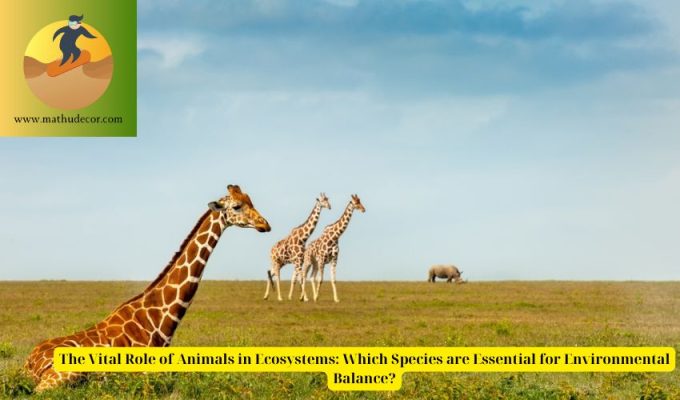
Discover the essential animals that play a crucial role in maintaining environmental balance within ecosystems.
Key Species Essential for Environmental Balance
Predators
Predators play a crucial role in maintaining the balance of ecosystems by regulating the populations of prey species. This helps prevent overpopulation that could lead to overgrazing and ecosystem imbalances. By controlling the prey population, predators contribute to a healthy distribution of species within the jungle, ensuring the overall health of the ecosystem.
Herbivores
Herbivores, or plant-eating animals, also play a significant role in maintaining environmental balance. They control plant populations by consuming vegetation, preventing any one plant species from dominating and allowing for a diverse range of plants to thrive. This shaping of the plant community’s structure influences the types and abundance of plants in an ecosystem.
Seed Dispersers
Many animals, such as birds, bats, and mammals, consume fruits and disperse seeds as they travel through the jungle. This aids in plant reproduction and supports biodiversity by helping new plants grow in different areas. The role of seed dispersers is critical for maintaining a healthy distribution of plant species and ensuring the continuity of plant life in various ecosystems.
Threats to Essential Animal Species
Habitat Loss
One of the biggest threats to essential animal species is habitat loss. As human populations continue to grow, natural habitats are being converted for agriculture, urban development, and infrastructure. This results in the fragmentation and destruction of ecosystems, leaving animals with limited space and resources to survive.
Poaching and Illegal Wildlife Trade
Poaching and illegal wildlife trade pose a significant threat to essential animal species, particularly those with valuable body parts such as ivory, rhino horn, and tiger bones. This illegal activity not only decimates animal populations but also disrupts the delicate balance of ecosystems, leading to cascading effects on other species and the environment.
Climate Change
Climate change is another major threat to essential animal species. Rising temperatures, extreme weather events, and changes in precipitation patterns can disrupt the natural habitats and migration patterns of animals. This can lead to reduced food sources, increased competition for resources, and ultimately impact the survival of these species.
These threats to essential animal species not only jeopardize the survival of individual species but also have far-reaching implications for the overall health and balance of ecosystems. It is crucial to address these threats through conservation efforts, sustainable development practices, and international cooperation to protect and preserve essential animal species for future generations.
Conservation Efforts to Protect Vital Animal Species
Conservation efforts to protect vital animal species are crucial in maintaining the balance of ecosystems and preserving biodiversity. One such effort is the establishment of protected areas and wildlife reserves, where endangered species can be safeguarded from habitat destruction and poaching. These areas provide a safe haven for animals to thrive and contribute to the overall health of the ecosystem. Additionally, conservation organizations work to raise awareness about the plight of endangered species and advocate for policies and regulations to protect them. By engaging local communities and governments in conservation initiatives, these efforts aim to secure the future of vital animal species for generations to come.
Conservation Strategies:
– Habitat restoration and reforestation projects to create suitable environments for endangered species
– Breeding and reintroduction programs to bolster the populations of vulnerable animal species
– Collaboration with local communities to promote sustainable practices that minimize human-wildlife conflict and support conservation efforts
– Research and monitoring to assess the status of endangered species and develop targeted conservation plans
– Education and outreach programs to raise awareness about the importance of protecting vital animal species and their habitats
Overall, conservation efforts to protect vital animal species require a multi-faceted approach that addresses habitat preservation, community engagement, and policy advocacy. By implementing these strategies, conservationists can work towards ensuring the survival of endangered animals and the preservation of healthy ecosystems.
In conclusion, various animals such as bees, wolves, and sea otters play important roles in maintaining the balance of ecosystems through pollination, predation, and habitat regulation. Protecting and conserving these vital species is crucial for the health and stability of our planet’s ecosystems.



Leave a Reply